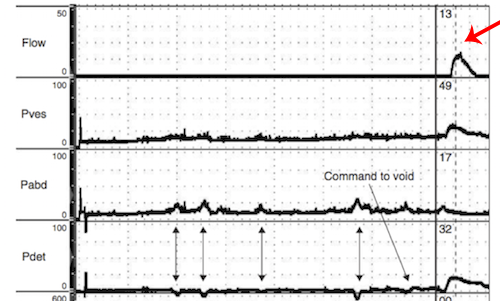by Dr. Sarah Mozafarpour and Dr. Evgeniy Kreydin
How Can Nerve Problems (Neuropathy) Cause Bladder and Urinary Voiding Symptoms?
The bladder, like other organs in the body, is controlled and influenced by the nervous system. The symptoms depend on the type of nerve cells that are damaged. As many as 87 percent of people with diabetes report some urinary symptoms1, and 30 percent of people with small fiber neuropathy had some urinary symptoms2. Nerve problems can cause the bladder to become overactive (going to the bathroom too often), underactive (the bladder doesn’t empty all the urine), or the sensation of the bladder can change (feelings of bladder discomfort or pain).
Where Can People With Bladder and Urinary Symptoms Seek Help?
Your primary doctor can begin to help you with these, and then refer you to a urologist if needed. Urologists are the doctors who specialize in bladder and urination symptoms. Your primary care doctor or urologist will ask you questions about your urination, do a physical examination (including a prostate exam for men and a pelvic exam for women) and order or perform testing.
What Tests Do Urologists Use?
- Voiding Diary (Bladder Diary):
For a few days you will be asked to record the amount of liquids you drink, the amount of urine you void each time and any accidents (incontinence) during the night and day. A bladder diary helps you and your doctor diagnose what type(s) of problems you are having. - Uroflowmetry:
In a private room, you will be asked to sit on a special toilet and urinate as you usually do. The toilet will record how much urine you pass and how strong your stream is. It is best to come for this test with a full bladder. The results are ready right away. - Cystoscopy:
This is also done in the office to help determine if there are visible problems inside your bladder or urethra (the tube carrying urine from the bladder to the outside world). Before the test, a small amount of lidocaine local anesthetic jelly is gently placed into the urethra to numb it. Then, a small flexible fiber-optic camera is passed into the urethra and bladder. This test is not painful and your doctor can watch the results live on a TV screen! - Urodynamic Evaluation:
This painless test that requires you to come to a specially equipped private urology room where your bladder as it is slowly filled with a sterile liquid and you are asked to empty your bladder while measurements are made. A thin tube is gently passed into your bladder to place the fluid, measurements are also taken from your rectum. Sometimes, X-rays are taken. This test gives your doctor a detailed look at how well your bladder and urethra are working during the different stages of urination.
More Information
NIH Urodynamic Testing

Flow: This shows your urine flow when you are given the permission to void; the red arrow is the uroflowmetry
Pves: Pressure within your bladder
Pabd: Abdominal pressure surrounding the bladder Pdet: Detrusor pressure is the pressure of bladder wall
Command to void: After filling up your bladder, you are given the permission to void
Image used with permission from John Wiley and Sons.
References:
1. Diabetic cystopathy: epidemiology and related disorders.
Frimodt-Møller C.
Annals of internal medicine. 1980;92(2 Pt 2):318-21. Abstract
2. Evidence of small-fiber polyneuropathy in unexplained, juvenile-onset, widespread pain syndromes.
Oaklander AL, Klein MM.
Pediatrics. 2013;131(4):e1091-100.
